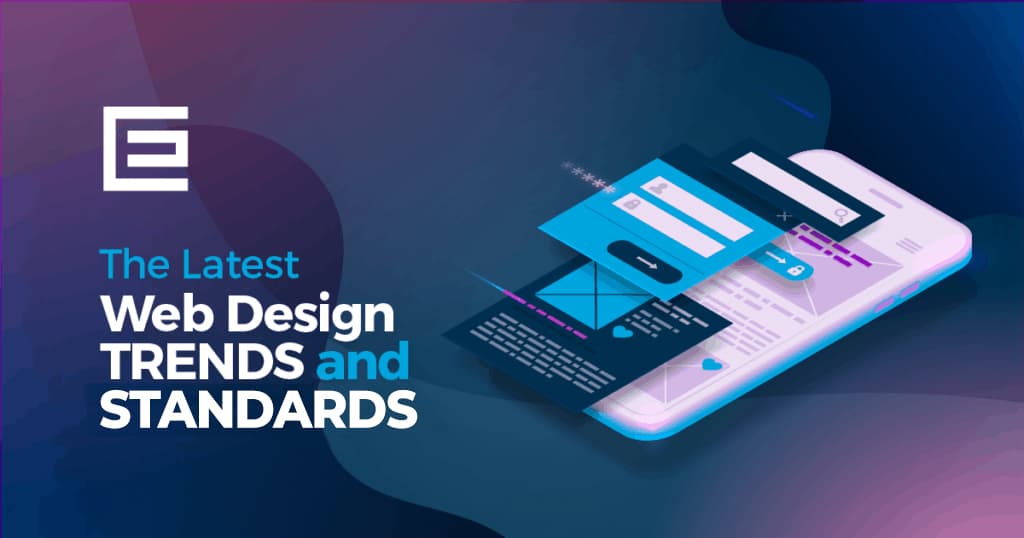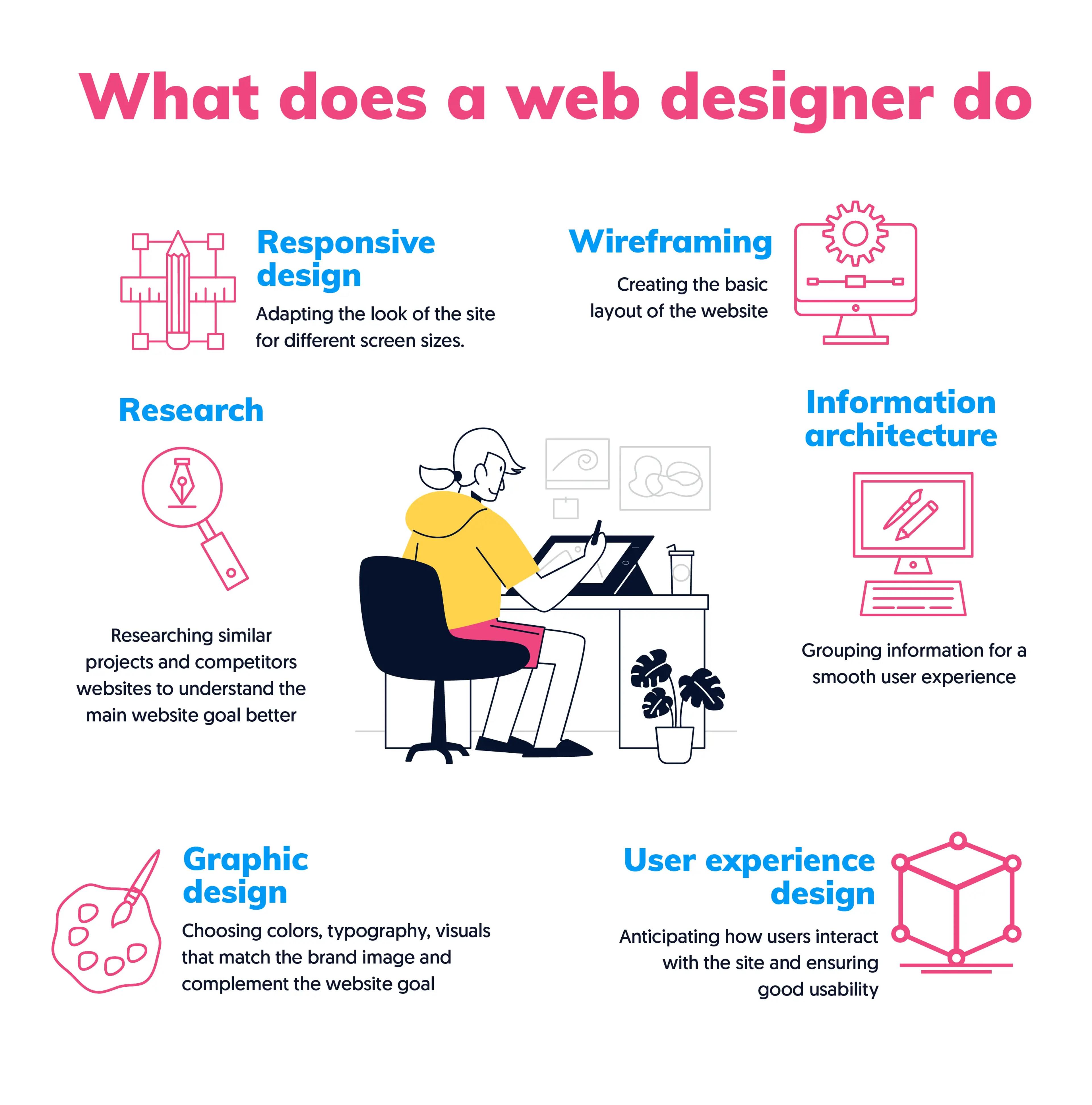Exactly How to Effectively Incorporate Aesthetic Appeals and Functionality in Website Design
When making a website, you need to strike a balance between looks and capability. It's not practically looking good; your design ought to likewise serve a function and overview individuals successfully. By concentrating on simpleness and instinctive navigating, you can develop an engaging experience. What aspects absolutely boost use while preserving visual appeal? Let's explore the key concepts that can bring about an unified mix of appeal and feature.
Understanding the Value of Looks and Performance
Understanding the equilibrium between visual appeals and functionality is necessary for developing a reliable customer experience when you develop a site. An aesthetically attractive site grabs focus, however it's the functionality that maintains users involved. If your site looks fantastic yet is tough to navigate, site visitors will quickly weary and leave.Consider your target market and what draws them in. You intend to produce a design that shows your brand name while guaranteeing convenience of use. Structured layouts, user-friendly navigation, and clear contact us to activity can enhance both appearances and performance.

Concepts of Effective Website Design
To develop an efficient website design, you need to stick to several crucial principles that improve both customer experience and aesthetic allure. Focus on simplicity; a tidy layout assists customers navigate conveniently. Use a constant shade scheme and typography to keep coherence across your website. This fosters experience and trust.Next, assure your design is receptive. Customers access internet sites on various gadgets, so your layout should adapt flawlessly. Pay attention to aesthetic power structure; highlight crucial components with color, size, or placement to direct individuals' focus.Finally, include ample white area. It stops mess and makes web content more digestible. Keep in mind, reliable internet layout equilibriums looks and capability, so every design choice need to offer a function. By adhering to these principles, you'll produce a website that's not just aesthetically enticing but also straightforward, inevitably maintaining site visitors involved and motivating them to return.
Focusing On Individual Experience
When prioritizing user experience, you'll intend to begin by recognizing what your customers genuinely require. Simplifying navigation design can make a big difference in how conveniently they locate what they're looking for. Likewise, improving visual power structure aids guide their interest to the most important components on your website.
Understanding Customer Requirements
Understanding customer needs is necessary for producing an interesting internet experience that keeps site visitors returning. To attain this, you need to determine the goals and preferences of your target market. Beginning by performing customer study, like surveys or interviews, to collect insights on what customers worth most. Take notice of their discomfort points and difficulties when connecting with similar websites. This information allows you to tailor your style, ensuring capability lines up with customer assumptions. Additionally, think about producing individual personalities that represent different sections of your target market, aiding you picture their requirements throughout the layout procedure. When you prioritize recognizing customer needs, you create a site that not only looks terrific yet additionally delivers a seamless, pleasurable experience that fosters loyalty.
Simplifying Navigation Style

Enhancing Visual Hierarchy
A solid aesthetic pecking order is necessary in guiding individuals through your website and ensuring they involve with vital material. To achieve this, use spacing, size, and shade purposefully. Make crucial aspects like headings larger and bolder than body message, drawing attention immediately. Make use of contrasting shades to highlight phone call to activity, motivating clicks. Furthermore, employ enough white room to separate areas, making material digestible and inviting.Consider the circulation of info; organize elements rationally, leading individuals' eyes from one indicate the following. Usage visual cues, like lines or arrowheads, to guide attention. By focusing on visual power structure, you improve user experience and raise the probability of conversions, ensuring your internet site is both visually pleasing and functionally effective.
Shade Theory and Its Effect On Usability
While picking the best shades for your site might look like a minor information, it significantly affects functionality and user experience. Shade influences how individuals regard information and can improve or prevent navigating. Contrasting colors can help essential aspects stand out, making it less complicated for site visitors to find what they need.Additionally, consider the psychology of colors: blue typically motivates trust fund, while red creates urgency. Knowing your target audience can assist your shade options, ensuring they reverberate well.Moreover, constant color design assist develop brand name identification, making your web site a lot more remarkable. Be cautious-- too lots of shades can bewilder individuals. Stay with a limited palette that complements your content and keeps clarity.Incorporating accessibility is also essential; verify your shade mixes are pleasant for those with aesthetic problems. By attentively applying color theory, you'll enhance usability and produce a more engaging customer experience.
Typography: Harmonizing Design and Readability
Shade options set the stage for your web site, but typography plays an equally important role in boosting customer experience. You desire your message to connect plainly while likewise mirroring your brand's personality. Start by picking font styles that are not only eye-catching however additionally readable. Sans-serif typefaces commonly work well for electronic screens, as they're easier to check out at various sizes.Maintain a power structure by utilizing different font style sizes and weights; this overviews customers with your content effortlessly. Consider line spacing and letter spacing; as well limited can irritate readers, while as well loosened can interrupt the circulation. Limitation your font style choices to two or 3 to keep the style cohesive.Finally, always evaluate your typography throughout different gadgets and browsers. What looks great on one display may not on an additional. Balancing style with readability warranties that your message resonates, keeping your target market engaged and notified.
Responsive Layout: Making Aesthetic Appeals Deal With All Gadgets
To ensure your internet site looks terrific on any kind of tool, you'll need to accept receptive layout principles. This method assurances your website adapts to numerous screen sizes, giving an optimal customer experience. Start by utilizing liquid grids and adaptable photos that scale seamlessly. Rather than dealt with measurements, select portions and family member systems, permitting your format to readjust dynamically.Next, carry out media questions in your CSS. These allow you use various designs based upon tool characteristics, like screen size. In this manner, you can preserve visual allure while assuring functionality.Don' t forget touch targets; ensure switches and web links are simple to touch on smaller displays. Focus on essential material, so customers can easily browse your site no matter their tool. By concentrating on these components, you'll create an appealing, visually appealing experience that meets the requirements of all individuals, whether they get on a desktop computer, mobile phone, or tablet computer .
Carrying Out Use Testing for Constant Improvement
To improve your website design, you require to establish clear functionality goals that align with customer requirements. By conducting customer tests, you can collect useful comments on just how genuine people connect with your site. Analyzing these outcomes will aid you make notified renovations and produce a more reliable user experience.
Specifying Usability Goals
While looks can draw individuals in, defining functionality goals is crucial for ensuring their experience stays satisfying and seamless. Begin by determining what you want individuals to achieve on your site (website design london Ontario). Consider their demands, behaviors, and tasks. Are they searching for details, making a purchase, or enrolling in an e-newsletter? Establish clear benchmarks to gauge success, like learn the facts here now task completion prices or time on task. Prioritize intuitive navigating, obtainable content, and receptive layout to enhance usability. On a regular basis take another look at these goals as individual assumptions advance. By defining usability goals, you reference develop a structure for reviewing and improving your site's efficiency. This concentrate on usability not only enhances user fulfillment however additionally enhances the general effectiveness of your layout
Conducting User Tests
Conducting user tests is important for refining your site and ensuring it meets your audience's demands. Beginning by recognizing your target customers and developing a test plan that outlines your purposes. Make use of a mix of qualitative and measurable techniques, such as surveys, interviews, and task-based observations, to gather comprehensive feedback. Invite individuals to browse your site while you observe their interactions and note any kind of problems they come across. Motivate open dialogue to record their ideas and feelings about the layout and capability. Keep sessions short and concentrated, guaranteeing you cover essential locations without overwhelming individuals. Make sure to record all findings, as this information will certainly be important for making educated design choices that improve both visual appeals and use.
Examining Test Outcomes
How can you effectively examine the results of your use examinations to drive constant renovation? Begin by classifying feedback right into common styles. Look for patterns in customer habits that highlight discomfort points or locations for improvement. Use measurable data, like job conclusion rates and time on task, to determine usability objectively. Do not forget to take into consideration qualitative understandings from user remarks; they often expose underlying concerns that numbers can't show. Focus on one of the most impactful findings and create workable products for your design group. Keep in mind, it's regarding iterating-- apply modifications, then examination again. This cycle of testing, evaluating, and refining aids you balance aesthetic appeals and capability, ensuring your web site fulfills customer needs efficiently while keeping aesthetic allure.
Frequently Asked Questions
Exactly how Do I Select the Right Shade Palette for My Website?
To select the ideal shade palette for your website, consider your brand name's character, target audience, and emotional impact (website design london Ontario). Use color psychology, develop harmony, and assurance readability. Examination mixes to see what reverberates ideal with site visitors
What Equipment Can Aid With Internet Layout Visual Appeals and Functionality?
You can use tools like Adobe XD, Figma, and Sketch to enhance your website design's aesthetic appeals and capability. These systems use user-friendly user interfaces, partnership functions, and pre-made design templates to improve your creative process and boost your layouts.
Exactly How Can I Integrate Animations Without Compromising Functionality?
To include computer animations without jeopardizing functionality, prioritize refined impacts that enhance customer experience. Usage CSS animations for smoother interactions, warranty quick load times, and examination on different devices to keep efficiency while adding aesthetic charm.
What Prevail Mistakes to Stay Clear Of in Website Design Appearances?
When creating, avoid chaotic designs, poor shade options, and irregular font styles. Do not ignore mobile responsiveness, as it can alienate customers. Confirm your layout straightens with your brand, creating a smooth experience that involves visitors successfully.
How Usually Should I Update My Web site's Layout for Ideal Aesthetics?
You must update your internet site's design every 1-2 years to stay on par with trends and preserve perfect appearances. On a regular basis renewing visuals assists engage visitors and guarantees your site continues to be easy to use and attractive. When you make a site, browse around this site recognizing the balance between appearances and capability is necessary for producing an efficient customer experience. To create a reliable web design, you require to stick to numerous key principles that improve both customer experience and aesthetic appeal. Users gain access to internet sites on numerous devices, so your style must adjust flawlessly. When prioritizing user experience, you'll want to start by recognizing what your customers truly need. Start by conducting user research study, like surveys or interviews, to gather insights on what users value most.